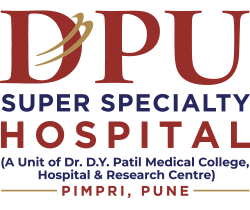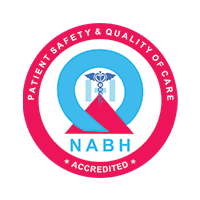The Advantages of Endoscopic Tech in Diagnosing Digestive Problems

Have you ever wondered how many people around you are silently struggling with digestive issues every day? It might surprise you to learn that 7 out of 10 urban Indians experience gut health issues, with almost 60% facing digestive problems every week and a staggering 12% suffering daily. With such a high prevalence, it's crucial to have reliable and effective diagnostic tools to identify and treat these problems promptly. This is where the cutting-edge technology of endoscopy comes into play.
Whether you’re searching for an advanced endoscopy centre in Pune or simply want to understand how endoscopic tech can transform digestive health diagnostics, this blog will guide you through the remarkable advantages of this technology and how it’s revolutionising the way we diagnose and manage digestive issues.
Diverse Endoscopy Types and Their Purposes
Endoscopy encompasses various types, each tailored to examine different parts of the digestive system:
- Gastroscopy: This procedure inspects the upper digestive tract, including the oesophagus, stomach, and duodenum. It's commonly used to identify ulcers, gastritis, and oesophagal cancers.
- Colonoscopy: Focused on the lower digestive tract, colonoscopy can detect colon polyps, cancers, and areas of inflammation.
- Capsule Endoscopy: Involves swallowing a small, pill-sized camera that captures images as it travels through the gastrointestinal tract, useful for spotting hidden bleeding or small intestinal disorders.
- ERCP (Endoscopic Retrograde Cholangiopancreatography): Combines endoscopy and fluoroscopy to diagnose and treat conditions related to the bile ducts, gallbladder, and pancreas.
Key Benefits of Endoscopic Technology
Endoscopic technology offers several advantages over traditional diagnostic methods:
- Minimally Invasive: Unlike surgery, endoscopy requires no large incisions, leading to less pain and quicker recovery times.
- Accurate Diagnosis: Provides a direct view inside the body, allowing for highly accurate diagnoses.
- Therapeutic Utility: This is not only diagnostic but also therapeutic. For instance, polyps found during a colonoscopy can be removed immediately, preventing potential progression to cancer.
- Safety: Generally safe with minimal risks, making it a preferable option for continuous health monitoring without severe side effects.
- Cost-Effective: By preventing the need for more invasive and expensive procedures, endoscopy can be a cost-effective solution for both patients and healthcare systems.
Real-Life Applications: Endoscopy in Action
The effectiveness of endoscopy is evident across various clinical applications:
- Cancer Detection: Early detection of cancers in the digestive tract significantly enhances the effectiveness of treatment and increases survival rates.
- Inflammatory Diseases: Conditions like Crohn's disease and ulcerative colitis can be monitored regularly, allowing for adjustments in treatment plans based on disease progression.
- Foreign Object Retrieval: Endoscopy can remove foreign objects swallowed accidentally, avoiding more invasive procedures.
- Bleeding Control: Techniques like endoscopic sclerotherapy and clipping can control bleeding ulcers, reducing the need for blood transfusions and surgeries.
The Cutting Edge: Future Innovations in Endoscopy
The future of endoscopic technology is promising, with ongoing innovations aimed at enhancing effectiveness and patient comfort:
- High-definition and 3D Imaging: Improvements in image quality provide clearer, more detailed views, improving diagnostic accuracy.
- Robot-assisted Endoscopy: This emerging field combines robotics with endoscopic techniques to increase precision during procedures.
- Artificial Intelligence (AI): AI is being integrated into endoscopic procedures to analyse images in real-time and identify patterns the human eye may miss.
- Less Invasive Techniques: Development of new tools and techniques that require even less invasiveness, potentially leading to almost discomfort-free procedures.
Overcoming Obstacles: Challenges and Considerations
Despite its numerous advantages, endoscopy does come with its set of challenges, some of which are listed below:
Skill Requirement
Endoscopy procedures require operators with high levels of expertise and specialised training. Achieving the best diagnostic and therapeutic outcomes depends significantly on the skill and experience of the endoscopist. Continuous education and hands-on practice are essential to maintain and enhance proficiency.
Equipment Availability
The latest endoscopic equipment is often necessary to ensure accurate diagnostics and effective treatment. Such advanced equipment can be expensive, making it challenging for smaller or less-funded healthcare facilities to afford. Moreover, regular maintenance and updates to the equipment are crucial, adding to the overall costs. This financial barrier can limit access to high-quality endoscopic care in certain areas, potentially widening the gap in healthcare equity.
Risk of Complications
As with all medical procedures, endoscopy carries a small risk of complications. Potential issues include infections, minor bleeding, or, in rare cases, gastrointestinal tract perforation. Although present, these risks are generally lower than those associated with more invasive surgical procedures. Implementing strict procedural protocols and adhering to hygiene standards can significantly mitigate these risks. Proper patient assessment and preparation also play a vital role in minimising potential complications, ensuring the procedure is as safe as possible.
Patient Considerations
Some patients may experience anxiety or discomfort about undergoing endoscopy. Providing thorough pre-procedure counselling and clear explanations can help alleviate concerns and improve patient cooperation. Ensuring that patients understand what to expect before, during, and after the procedure can significantly impact their overall experience. Post-procedure care and monitoring are essential to ensure a smooth recovery and promptly address any immediate complications, enhancing patient satisfaction and outcomes.
Operational Challenges
Coordinating endoscopy schedules and managing patient flow efficiently requires well-organised systems within healthcare facilities. Ensuring that endoscopic procedures are accessible to a wide range of patients can be challenging, especially in regions with limited healthcare infrastructure. Training and retaining skilled staff, alongside effective management of resources, are critical to overcoming these operational hurdles and providing timely, high-quality endoscopic care to those in need.
Conclusion
Endoscopic technology has revolutionised how digestive problems are diagnosed and treated, offering a blend of precision, safety, and cost-effectiveness. From routine screenings like colonoscopies to advanced procedures using robotic technologies, endoscopy's capabilities continue to expand.
Endoscopy centres in Pune are at the forefront of adopting these advanced technologies, ensuring patients receive the best possible care. As technology advances, the scope of what endoscopy can achieve will only broaden, further cementing its role as a cornerstone of modern gastroenterology.








